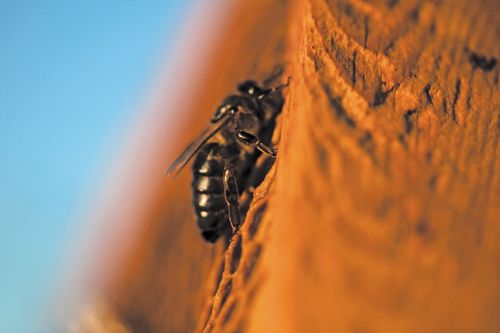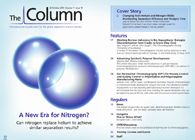UHPLC for Queen Bees
Photo Credit: Chico Sanchez/Getty Images

Bees are vital to our food chain through their pollination of key crops. However, numbers are seriously declining as a result of climate change, changing land usage, and the use of pesticides. The role of the queen bee in the colony is also of great importance to the survival of the group. Without a queen bee the colony cannot survive. Data on the effects of environmental stressors on queens is scarce, therefore a group of scientists from Switzerland have investigated the impact on queens of western honey bees (
Apis mellifera
) using ultrahigh-performance liquid chromatography–tandem mass spectrometry (UHPLC–MS–MS) to confirm the pesticide quantities that are often present in the environment.
1
The team theorized that exposure to field-realistic concentrations of neonicotinoid pesticides would significantly reduce the performance of the queen as a result of changes in behaviour, and reproductive anatomy and physiology. To test this, the group exposed developing queens to environmentally-relevant concentrations of the common neonicotinoid pesticides thiamethoxam and clothianidin. Both pesticides are widely applied in global agricultural ecosystems and are therefore available to pollinators, but are currently subjected to two years of restricted use in the European Union because of concerns over their safety. Treatments were administered via pollen supplements that were prepared from bee-collected pollen and honey (3:1 by mass) obtained from non-intensive agricultural areas of Switzerland. Supplements for the neonicotinoid treatment were additionally spiked with 4 ppb thiamethoxam and 1 ppb clothiandin to represent environmentally relevant concentrations observed in the pollen of treated crops. These amounts were confirmed (4.16 ppb and 0.96 ppb for thiamethoxam and clothianidin, respectively) using UHPLC–MS–MS. Queens were allowed to sexually mature. Flight behaviour was observed daily for 14 days; production of worker offspring was observed weekly for four weeks. In pesticide-exposed queens, reproductive anatomy (ovaries) and physiology (sperm quality and quantity), rather than flight behaviour, were affected and more than likely corresponded to a reduction in queen success (alive and ability to produce worker offspring). This study highlights the detrimental effect of neonicotinoids to queens of environmentally and economically important social bees. In addition, it further strengthens the need for stringent risk assessments to safeguard biodiversity and ecosystems vulnerable to these elements. - K.M.
Reference
1. G.R. Williams et al.,
Sci. Rep
.
5
, 14621; doi: 10.1038/srep14621 (2015).

Determining Enhanced Sensitivity to Odors due to Anxiety-Associated Chemosignals with GC
May 8th 2025Based on their hypothesis that smelling anxiety chemosignals can, like visual anxiety induction, lead to an increase in odor sensitivity, a joint study between the University of Erlangen-Nuremberg (Erlangen, Germany) and the Fraunhofer Institute for Process Engineering and Packaging (Freising, Germany) combined behavioral experiments, odor profile analysis by a trained panel, and instrumental analysis of odorants (gas chromatography-olfactometry) and volatiles (gas chromatography-mass spectrometry).
Investigating 3D-Printable Stationary Phases in Liquid Chromatography
May 7th 20253D printing technology has potential in chromatography, but a major challenge is developing materials with both high porosity and robust mechanical properties. Recently, scientists compared the separation performances of eight different 3D printable stationary phases.
Detecting Hyper-Fast Chromatographic Peaks Using Ion Mobility Spectrometry
May 6th 2025Ion mobility spectrometers can detect trace compounds quickly, though they can face various issues with detecting certain peaks. University of Hannover scientists created a new system for resolving hyper-fast gas chromatography (GC) peaks.

.png&w=3840&q=75)

.png&w=3840&q=75)



.png&w=3840&q=75)



.png&w=3840&q=75)









